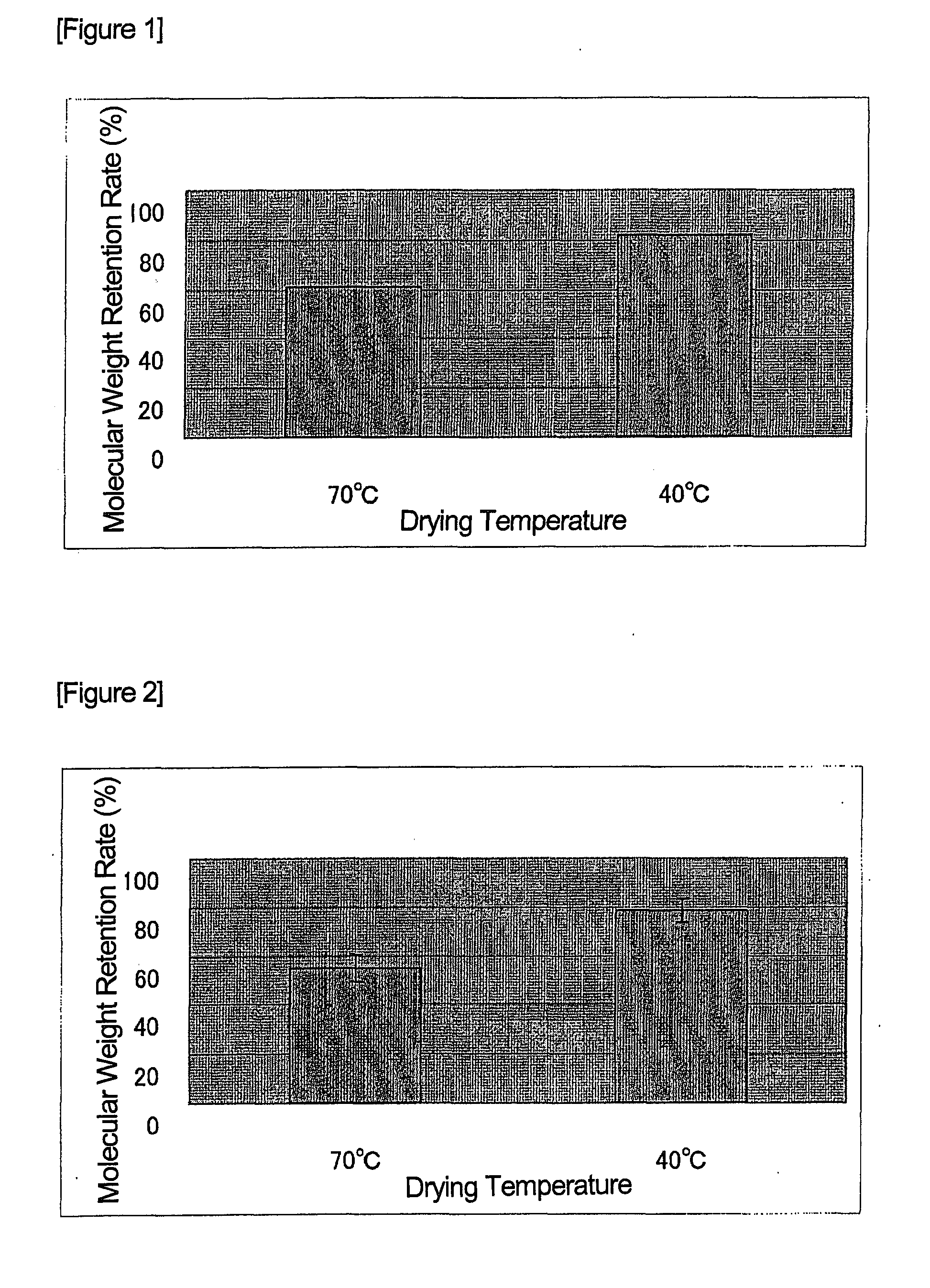Bio-degradable/ absorbable polymer having reduced metal catalyst content, and process for production thereof
a biodegradable and bioabsorbable polymer technology, applied in the field of biodegradable and bioabsorbable polymers having low, can solve the problems of inability to remove metal catalysts, inability to meet the requirements of biodegradability, and inability to meet the requirements of biodegradability, and achieve the effect of small reduction in molecular weigh
- Summary
- Abstract
- Description
- Claims
- Application Information
AI Technical Summary
Benefits of technology
Problems solved by technology
Method used
Image
Examples
first embodiment
Production Example I-1
[0069]Lactide and ε-caprolactone (50:50, molar ratio) was introduced into a reaction glass tube, and 300 ppm of tin octylate (87 ppm in terms of a tin metal) was added thereto. Polymerization was performed under a nitrogen atmosphere using a known method to thereby obtain a polymer having a weight average molecular weight of 400,000. The polymer was pulverized using a grinder into a granulated polymer having a mean particle diameter of 3.0 mm. The amount of tin remaining in the polymer was 80 ppm.
[0070]The average particle diameter was determined from the weight ratio using sieves having different mesh sizes.
second embodiment
Production Example II-1
[0086]Lactide and ε-caprolactone (75:25, molar ratio) was introduced into a reaction glass tube, and 300 ppm of tin octylate (87 ppm in terms of a tin metal) was added thereto. Polymerization was performed under a nitrogen atmosphere using a known method to thereby obtain a polymer having a weight average molecular weight of 700,000. The polymer was pulverized using a grinder into a granulated polymer having a mean particle diameter of 3.0 mm. The amount of tin remaining in the polymer was 80 ppm.
[0087]The average particle diameter was determined from the weight ratio using sieves having different mesh sizes.
PUM
| Property | Measurement | Unit |
|---|---|---|
| Temperature | aaaaa | aaaaa |
| Temperature | aaaaa | aaaaa |
| Temperature | aaaaa | aaaaa |
Abstract
Description
Claims
Application Information
 Login to View More
Login to View More - R&D
- Intellectual Property
- Life Sciences
- Materials
- Tech Scout
- Unparalleled Data Quality
- Higher Quality Content
- 60% Fewer Hallucinations
Browse by: Latest US Patents, China's latest patents, Technical Efficacy Thesaurus, Application Domain, Technology Topic, Popular Technical Reports.
© 2025 PatSnap. All rights reserved.Legal|Privacy policy|Modern Slavery Act Transparency Statement|Sitemap|About US| Contact US: help@patsnap.com

